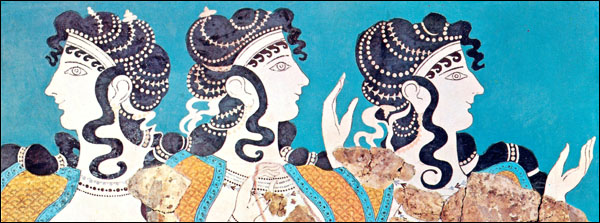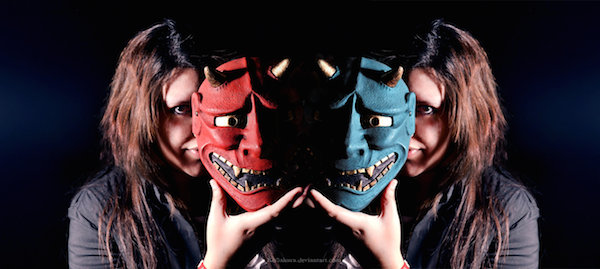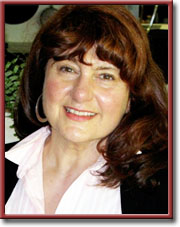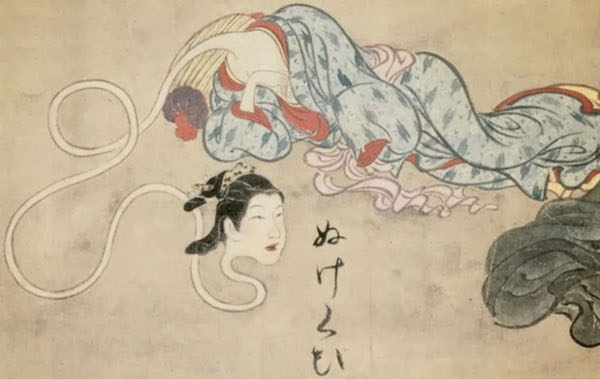Fright Night

“I knew nothing about Halloween until we moved to the United States, and the whole business of dressing up in scary costumes to wander from door to door begging for candy seemed very strange, to say the least. Since I was a mature woman of 14, I decided that the whole thing was ridiculous but, at the same time, inexplicably compelling. So, when the night finally arrived, I donned a ratty old kimono and made up my face to look like the scariest of all scary witches, Obake.”—Helen Noakes
Waking Point
By Helen Noakes

“We make up horrors to help us cope with the real ones.”—Stephen King
 SAN FRANCISCO California—(Weekly Hubris)—10/27/14—I knew nothing about Halloween until we moved to the United States from Japan, and the whole business of dressing up in scary costumes to wander from door to door begging for candy seemed very strange, to say the least. Since I was a mature woman of 14, I decided that the whole thing was ridiculous but, at the same time, inexplicably compelling. So, when the night finally arrived, I donned a ratty old kimono and made up my face to look like the scariest of all scary witches, Obake.
SAN FRANCISCO California—(Weekly Hubris)—10/27/14—I knew nothing about Halloween until we moved to the United States from Japan, and the whole business of dressing up in scary costumes to wander from door to door begging for candy seemed very strange, to say the least. Since I was a mature woman of 14, I decided that the whole thing was ridiculous but, at the same time, inexplicably compelling. So, when the night finally arrived, I donned a ratty old kimono and made up my face to look like the scariest of all scary witches, Obake.
To say that my efforts were successful would be an understatement. The little kids in my neighborhood gave me a wide berth, and kids of my own age avoided me. All but the neighbor’s son, who decided I was the hottest blood-streaked babe he’d ever seen and tried to grope me. He got some sugar all right, a bag full of candies right across the kisser, and a few choice Japanese words that served to enhance my reputation as “the strange girl down the block.”

As witches go, Obake, the Japanese version, is far spookier than her Western sisters. She morphs into all sorts of terrifying forms, after she seduces some hapless victim. To accomplish such a seduction, Obake takes on a pleasing form, indeed a gorgeous form, irresistible to any passing Samurai or other deluded male. Then, when she has him properly secluded, she lets him see her real self. That real self is sometimes called Onibaba; Oni, being the Japanese word for demon.
For reasons that are too complex and irrelevant to describe here, my parents moved to Japan when I was six and we left, to come to the United States, when I was 14. So I knew a great deal about Obakes, Onibabas, and the like. Save for the stories of Edgar Allen Poe, I believed, and still believe, that the Japanese have a uniquely successful take on terror. You need only see a film called Onibaba, written and directed by Kaneto Shindo, to experience what I saw as a kid. Akira Kurosawa’s Ran and Throne of Blood, though never meant as horror films, have an element of gorgeous, eerie gruesomeness that only Kurosawa could imagine and create.
The demon masks of Noh plays were familiar to me. For Vatarai San, the lady who took care of me as a child (my mother was laid low by a combination of amoebic dysentery and jaundice), took me to these all-day events on a regular basis. Vatarai San was a highly cultivated woman who adopted me as her own from the very beginning. “Noh,” she would say, “is a necessary part of any woman’s education.” She seemed to ignore my boredom with the more sedate proceedings on the stage and highly approved my excitement when the Oni or Onibaba made an appearance. Noh stories often recounted hair-raising experiences—literally hair-raising. The character subjected to some personal horror would begin maniacally pacing the stage. This was my signal to sit up and take notice. And then, as if by magic, he would develop a long mane of white hair, which he would toss about with a vengeance that would put a typhoon to shame. Oh how I loved these terrifying beings who would transform from mild, polite courtiers into banshees and demons of epic proportions!
Of course masks were involved—exquisite masks and fantastical wigs. And now that I am involved in playwriting and theater craft, I seem to be obsessed with the concept of masks, not only as props in the theatrical world but as expressions of our inner selves.
It seems to me that the masks we choose to wear speak volumes about the state of those inner selves. And, yes, I mean the costumes we choose to don for holidays such as Halloween, but I also mean the masks we put on as we interact with the world. How much of ourselves do we let the world see? Which parts of ourselves do we feel we must protect from the world, hide from it?
These are critical questions that I think need to be addressed in order to gain a clearer understanding of ourselves. And, when we ask them, we should set aside that inner critic, that follower of “the rules” of society. Rules, like fear, have no function in the process.
As for Halloween, how interesting that we don those masks that inspire fear. I believe that we do so to break the spell of terror over us, to bring it down to size. For how best to overcome something than to make it into a parody, to laugh at it?
Enjoy All Hallows Eve. Remember its Western tradition. And remember, too, that November first is All Souls’ day—a quieter time, free of the things that go bump in the night.
6 Comments
barbara kalmoutis
as usual….very interesting article. Thank you very much. Barbara
Elyce Melmon
Loved it! You are such a delightful writer. I could totally visualize your experience!
diana
Wonderful piece, full of wise nuggets. I would have loved to see you as the Japanese witch scaring the neighborhood at 14. xoxo
evi psathidou
never realized you were wearing a mask – it’s a very friendly and benign mask ! loved the article, the light touch with which you mix info and contemplation
…..xxxx
Anita Sullivan
Helen, this is so interesting it makes me want more. I think you’re absolutely right that we frighten ourselves to help manage terror. That tactic never works for me, it simply doubles the misery. But it obviously works for lots of people. Thanks for this piece!
jerry
Hi Helen, great piece!
Facing one’s fears is a great challenge that my son Doug decided to take on as a pre-teen. Doug, like most kids, grew up afraid of the dark and all those mysterious beings that most probably were lurking out there, just waiting for the moment to get him! He gave himself Fright Therapy by purposely watching as many scary movies as he could and then making fun of them (just as you write about), pretty much alleviating most of his fears. I think he re-invented “laughing in the face of death”!
It worked for him; however, I still hate scary movies because they, well, scare me!.